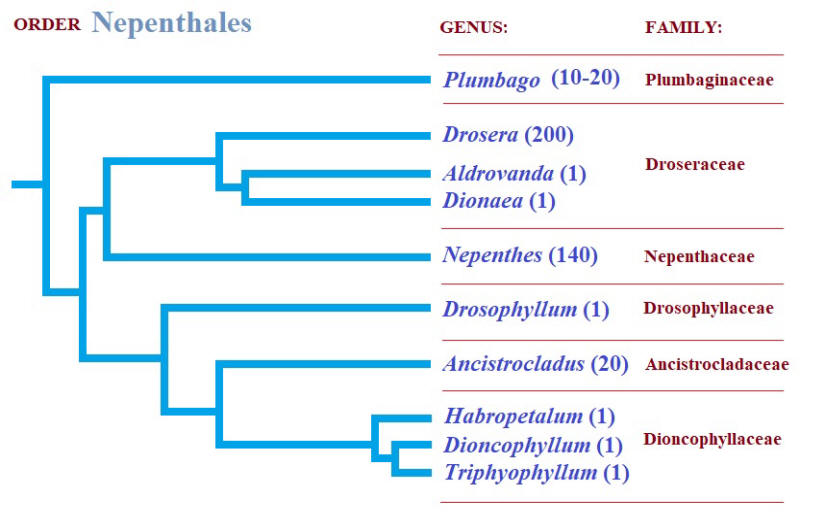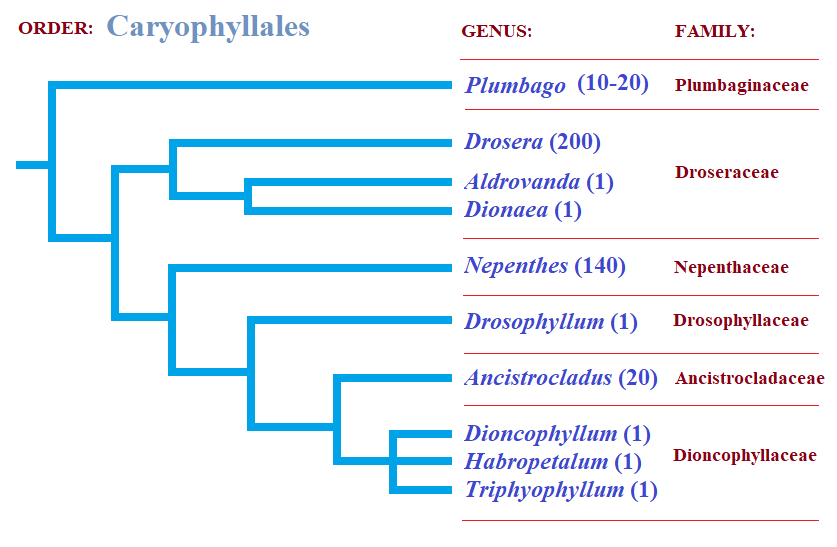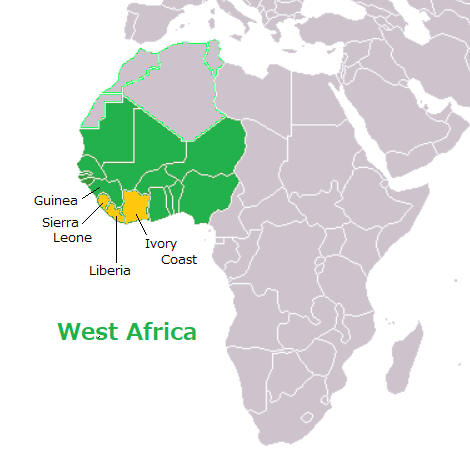|
-----------------------------
|
Carnivorous
Plants Distribution Map
GENUS
Triphyophyllum
FAMILY
Dioncophyllaceae
West African Carnivorous Liana
1 species
ORDER
Caryophyllales
Click map to
enlarge Illustration List of Species --->
International Carnivorous Plant Society Carnivorous Plant Species List : Triphyophyllum Last update 2018-October-11 GENUS Triphyophyllum (1 species) T. peltatum (1952) GENUS Habropetalum (1 species) H. dawei (1952) GENUS Dioncophyllum (1 species) D. thollonii (1890) GENUS Ancistrocladus (21 species)
A. abbreviatus (
)
LIFE CYCLE
Stage 2: Carnivorous
Stage 3: Liana
Stalked Gland: multi-celluler, multi-layered, vascularized with both xylem
and phloem INFLORESCENCE Glabrous, few-flowered cymes
Flower: Actinomorphic
--- ref.: Ellison & Adamec (2018)
|
Carnivorous Plants Distribution Map based on
Juniper
et al.(1989), Komiya (1994), Lowrie (1998), Schnell (2002),
and others.


